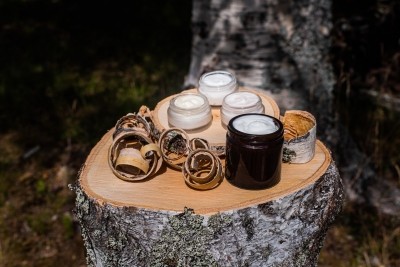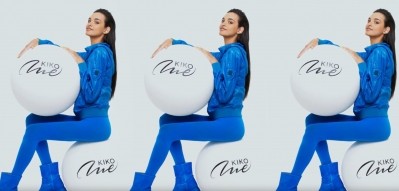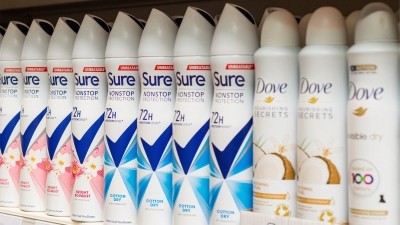The rise and rise of upcycled ingredients for cosmetics

According to the UN’s Food Waste Index Report for 2024, the food industry throws away more than $1tn (US) worth of food each year. This 'food waste' also generates an estimated 8–10% of global greenhouse gas emissions.
These figures are not just focussed on household food waste – they also include the inedible food parts from throughout the human food supply chain, in both the retail and food service sectors.
This huge waste of resources is ripe for transformation into another product, which is also known as 'upcycling' and this was a big focus at In-Cosmetics Global 2024.
The concept of upcycling strives to create a product of higher quality or value than the original. Simply put within the context of the beauty and personal care industry, upcycling refers to the process of transforming waste materials from various sources into valuable ingredients for cosmetic products.
Community lead at The Upcycled Beauty Company, Anna Crovetto, defined ingredient upcycling as when: “an ingredient is derived from a by-product from another process or industry,”
“The ingredient should not be the primary reason for which the feedstock was produced or grown,” she explained.
This is also not to be confused with recycling. Head of research at Mibelle Biochemistry Dr Franziska Wandrey explained the difference between the two: “While recycling often involves breaking down waste into raw materials to be reused, mostly in the same way as before, upcycling adds value to the waste material by transforming it into a product of higher quality or value than the original source.”
Coffee-powered beauty ingredients
In recent years, upcycling has seen a significant uptick across the cosmetics industry. It has a positive environmental impact and offers the opportunity to create products that meet consumer demand for more eco-conscious beauty.
It’s not necessarily a new concept. Many food-sourced ingredients, including coconut, avocado, olive oil, oats, green tea, aloe vera, and citrus fruits are already used in cosmetics as natural solutions for skin protection, moisturisation, and even anti-ageing purposes. But it is certainly growing and becoming more innovative.
“There are many ingredients made from upcycled food and beverage feedstocks such as coffee, citrus fruits, grapes, and olives,” said Crovetto. “You can find coffee, orange juice, wine, and olive oil in almost every supermarket, so it makes sense that these products generate elevated levels of loss in the supply chain, by-products during processing, or waste after use. Where there is an abundance of by-products and waste there is also a constant and reliable source of materials available for upcycling within personal care.”
It appears that this trend is now moving from being more niche, or ‘just for natural cosmetics’ brands, over into the mainstream.
Danish coffee-based ingredients supplier Kaffe Bueno is one example of a company putting these processes into practice.
The business specialises in upcycling coffee by-products – mainly used coffee grounds that are rich in valuable compounds. The team opened the world’s first coffee biorefinery last autumn and has received funding from the European Innovation Council and Borregaard
According to co-founder & CCO Alejandro Franco coffee by-products undergo specialised processing to extract beneficial components, utilising methods that are both efficient and sustainable, to preserve the integrity of the bioactive ingredients. “Following extraction, the ingredients are purified and rigorously tested to meet the cosmetic industry's high standards for quality and safety,” he explained.
Once approved, these upcycled ingredients are ready to be formulated into cosmetic products, offering a range of benefits from anti-wrinkles to hair repair and strengthening. The company offers a range of active and functional ingredients, including its KAFFOIL, a sustainable alternative to Argan oil which increases hair shine and promotes anti-breakage, and KAFFAGE, a patented active biopolymer protecting collagen and elastin while increasing hydration, reducing fine lines and hyperpigmentation.
Upcycled barley spent grain from a brewery
Another example process comes from The Upcycled Beauty Company, an organisation which upcycles waste leftovers to create high-performing, natural, and vegan ingredients, one being its Barley TONIQ made from barley spent grain. The company has partnered with a brewery located less than 80km from its own UK manufacturing site to upcycle barley spent grain leftovers that would otherwise go to waste.
Crovetto explains the process: “Beer brewing includes a process called ‘malting’ which means soaking the barley grain, so it germinates, then gently cooking it. This mixture is then milled to reduce the particle size, then the malted barley is mashed and boiled with water to extract the sugars before fermenting with yeast to produce alcohol. Barley spent grain is the waste product resulting from this process, we ferment the spent grain with enzymes and then add a microbiome friendly grade of propanediol eliminating the need for a preservative.”
Rich in proteins, peptides, polypeptides, amino acids & carbohydrates, Barley TONIQ® works to soothe and rebalance irritated skin. The Upcycled Beauty Company also offers Blueberry NECTA, Olive CRUSH, and Faba TONIQ, a hairstyling product upcycled from a hummus by-product, among others.
“No new materials are created, and no existing resources are wasted,” adds Crovetto. “The supply chain in this case is quite simple - all that is needed is a good partnership with local Mediterranean food producers.”
Leftover pinecones and reforestation
Similarly, Mibelle Biochemistry has just launched its novel hair care ingredient PinoPlex, which is derived from sustainably handpicked, upcycled pinecones.
The business works with pine cones that are used for reforestation purposes. The seeds are taken out to plant new trees and the pine cones are taken without the seeds to obtain PinoPlex through upcycling.
“Normally the empty pinecones are considered waste and are discarded,” explained Mibelle Biochemistry’s Dr Wandrey. “We make use of this resource to obtain valuable molecules that are beneficial for hair shine and strength.”
Changing consumer perception of ‘waste’
However, Crovetto highlights that consumer acceptance of products made using upcycled ingredients can still be a challenge.
“There is a perception that upcycled ingredients are dirty and contaminated or should be lower cost than their non-upcycled counterparts,” she said.
“When we talk about waste, we don’t mean ‘trash’, but a by-product from another process or industry such as forestry or food. It's important to understand that waste doesn't equate to something unusable or of no value,” she continued.
“Waste comprises a significant portion of discarded yet valuable resources that could, and should, be repurposed. Upcycling allows us to create higher value materials from by-products which are nutrient rich and provide a plethora of interesting phytocompounds for personal care."
Crovetto also highlighted that beauty and personal care and brands can sometimes be unsure which claims to make and words to use on their packaging and in their marketing campaigns.
“As part of a PlantPro project survey conducted in Denmark, consumers were asked about which upcycling food terms they were aware of or not. Though familiarity around upcycling was low and by/co-product was higher, the report found an upward tendency for ‘upcycling’.
Although there is still some way to go, this was good news, as there is growing consumer awareness about upcycling and what this means in terms of sustainability.”
Franco said he has found attitudes towards upcycling “overwhelmingly positive”, both within the beauty industry and among consumers.
“There's a growing recognition of the need for sustainable practices, with upcycling seen as a key innovation towards transitioning to natural. Consumers are increasingly seeking out products that align with their values of environmental responsibility and ethical consumption,” he shared.
Communicating the benefits of upcycled ingredients in beauty
Dr Wandrey suggested the key to combatting negative perceptions lay in communicating the benefits to consumers, as well as the planet: “While upcycling is not yet a common practice in the cosmetics industry, it is gaining traction as part of the industry's move towards sustainability and is expected to become more widespread in the future. We need to ensure that the ingredient offers a benefit not only for the environment but also for the skin,” she said.
Mibelle Biochemistry’s senior digital marketing manager, Christine Meier, also added that transparency is key in communicating that the brand is acting in a sustainable and responsible manner.
“For consumers, buying products with upcycled ingredients is a way to align their values of sustainability with their consumer behaviour,” she said.
“They appreciate the idea of upcycling, as it helps to reduce waste. For the industry, it can be part of the brand identity and its core values: what differentiates the brand from others, and demonstrates innovation.”

















![CosmeticsDesign’s editors on ingredients innovation at in-cosmetics Global 2024. [Getty Images]](/var/wrbm_gb_food_pharma/storage/images/_aliases/wrbm_tiny/publications/cosmetics/cosmeticsdesign-asia.com/article/2024/04/29/top-3-ingredients-innovations-at-in-cosmetics-global-2024/17376021-1-eng-GB/Top-3-ingredients-innovations-at-in-cosmetics-Global-2024.jpg)



